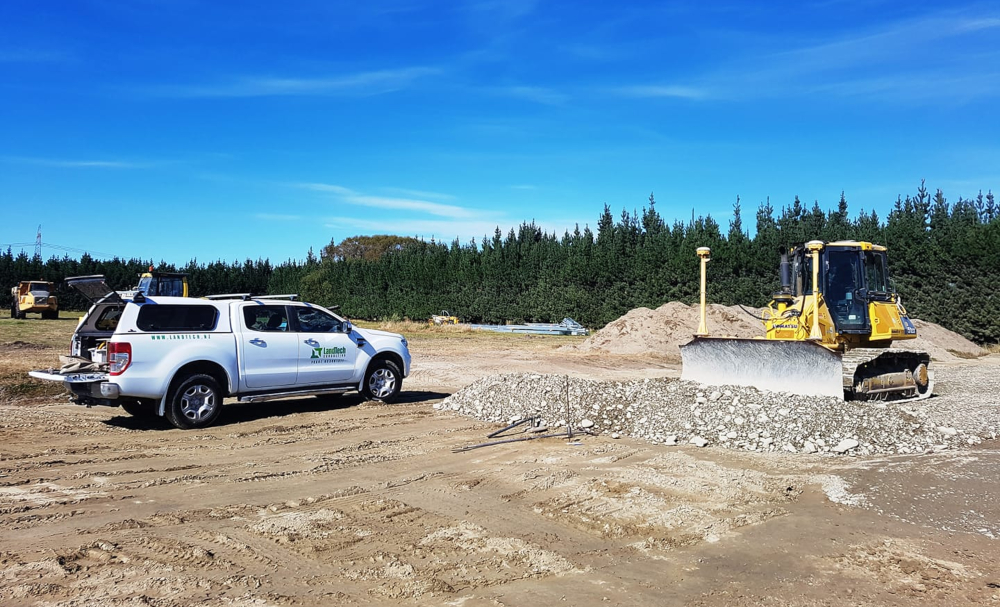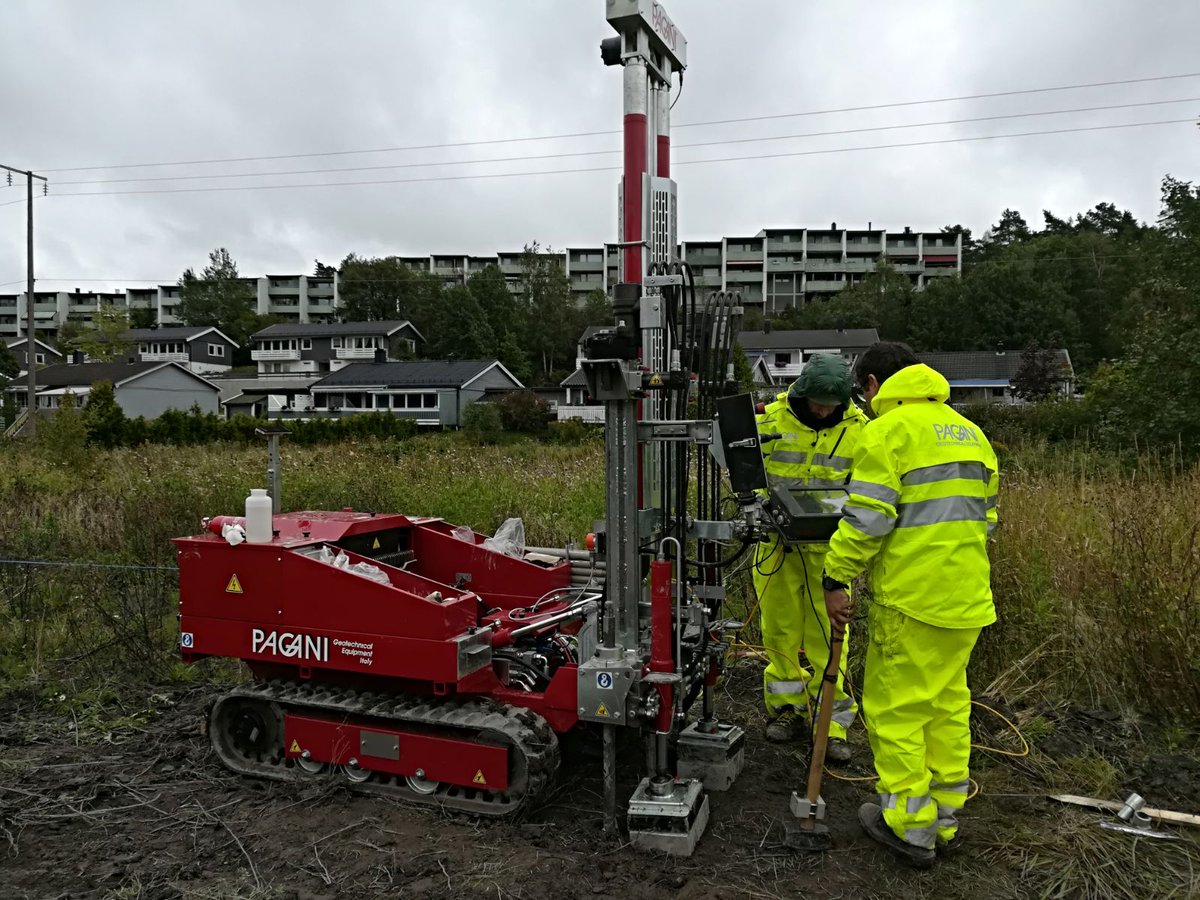CONE PENETRATION TESTING (CPT)
LandTech are pleased to offer Cone Penetration Testing (CPT) and Dynamic Probe – Super Heavy (DPSH) testing with our new Italian made Pagani TG63-150 rig.
These track mounted rigs are compact and highly mobile, able to tackle difficult terrain from steep slopes, marshy ground, compact residential settings, or even inside structures. The rig is light enough it can be lifted by crane, helicopter, or Hiab into otherwise inaccessible sites. The rig is equipped with soil anchors which reduce the weight of the machine and allow fast establishment on site, with a variety of anchor types to suit different soil conditions.
The rigs are based in our Auckland / Tāmaki Makaurau and Christchurch / Ōtautahi offices and can travel to cover the majority of the North Island / Te Ika-a-Māui and the South Island / Te Waipounamu as required.
With CPT and DPSH testing available using this singular machine, we can establish an accurate and continuous soil profile through a wide range of materials, from dense gravels to soft clays and silts.
Dimensions and Weights
-
- Height: 1.6m (mast down) to 4.6m (during DPSH testing)
- Length: 2.5m
- Width: 1.2m
- Weight: 1100kg (without accessories)
CPT Overview
A CPT is a form of deep soil testing involving a steel probe which is pushed approximately 20mm into the ground per second, with measurements of tip resistance, sleeve friction, and penetration porewater pressure recorded during testing. The results of a CPT can be used to create an accurate soil profile showing the interpreted soil strength and stratigraphy in soft and medium density soils.
Discover further information about CPT's, what they are, their history and when you would require one.

Years Experience
Completed Projects Across New Zealand
What is a Cone Penetration Test
First developed in 1932, the CPT has a long history of creating soil profiles. The original design was limited to measuring the resistance to penetration at the tip of the cone, and inferring density from the results. In 1953, the friction sleeve was added and the ratio between the tip resistance and friction sleeve was used to classify soil behaviour and type. By 1974 cone penetrometers could also measure changes in pore pressure during penetration (CPTs with this instrumentation are also referred to as a piezocone), creating the basis of the cone we use today. Developments in the testing procedure such as a constant rate of penetration, regular recording interval, and correlation with soil samples from other testing methods has created a reliable, repeatable, and affordable soil profiling method.
A CPT is a form of deep soil testing involving a steel probe which is pushed approximately 20mm into the ground per second, with measurements of tip resistance, sleeve friction, and penetration porewater pressure recorded during testing. The results of a CPT can be used to create an accurate soil profile showing the interpreted soil strength and stratigraphy in soft and medium density soils.
Porewater pressure measurements identify areas of perched water tables, high or low water flow, and provide insight into drainage conditions and assist in evaluating soil behaviour type. A comparison between the sleeve friction and cone tip readings, referred to as the friction ratio above, allows an accurate soil profile to be interpreted. A finer grained material will have more points of contact on the friction sleeve, leading to a higher reading. However, a higher density material will provide a higher pressure on the friction sleeve than a less dense material. As such, the ratio between the two indicates how the soil is behaving and infers a soil type. A high friction and low density material is likely to be finer than a medium friction high density material.
The CPT is limited to soft to medium density soils, due to the delicate sensors required to achieve the accurate measurements that make the test so useful. This means that the CPT is unable to penetrate through harder material such as dense gravel or cemented volcanic ash layers. Fortunately, the Pagani TG63-150 is also equipped with a Dynamic Probe – Super Heavy (DPSH) test. This test involves applying a known force (i.e., known weight dropped from a known height) onto a rod string, and generates a soil density profile. While the results of the test are not as comprehensive as the CPT, it can be used to penetrate through horizons of dense material into softer underlying material where the CPT can be resumed. Alternatively, it can be used to confirm the dense material continues for sufficient depth to as prove any additional testing unnecessary.
The applicable depth of CPT and DPSH tests are limited by local soil conditions (i.e., depth to rock or similar impenetrable material) and by the available rod lengths. LandTech are currently equipped to conduct tests up to 30m depth but would be excited to undertake deeper testing if your project required.

When would I need a CPT?
The CPT is useful for providing a soil profile to a depth generally unachievable by hand tools. It excels in softer soils where conventional boreholes may have difficulty returning a sample and has a long history of use which provides a solid basis for inferring fundamental soil properties and various soil behaviours from the CPT results. CPT results can be used to assess the following items of interest:
- Soil profile
- Identification of layers of interest, such as:
- Weak layers
- Peat deposits
- Expansive clays
- Liquefiable material
- Potential for static settlement
- Groundwater profile, and potential aquitards
- Bearing capacity analysis
- Pore pressure dissipation
The above assessments can be undertaken relatively quickly with established and accepted methods within the engineering community. These assessments can be used to assist with design of subdivision, residential or commercial structures, or civil infrastructure design. Additionally, the soil profile as assessed by a CPT can be used to aid in ground improvement, such as stone column or timber pile densification, or overburden compaction.
The DPSH is especially suitable in providing the depth or extent of known dense layers which may be used for founding deep end bearing piles.
